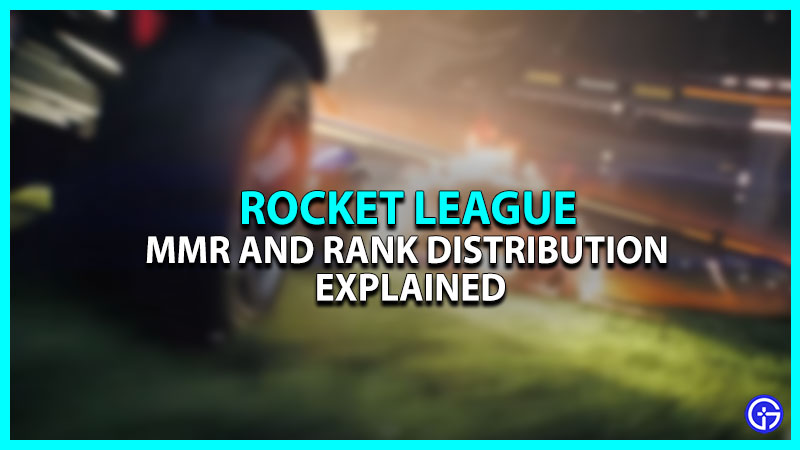Curious to know about Rocket League ranks, rank distribution and MMR? This guide will explain everything you need to know. In almost all online multiplayer games, players are assigned a certain Rank. These allocated Ranks are important for matchmaking as they help to sort players in a fair lobby. Thankfully, in Rocket League, the MMR (Matchmaking Rank) feature is available as well. This does justice by matching players against equal competition. So, how does this Ranking system work?
Rocket League Ranks

Rocket League features 23 different ranks (including unranked). Each Rank is further subdivided into 4 divisions. Following are the ranks arranged in ascending order, right from unranked to the highest possible rank you can achieve in Rocket League.
- Unranked
- Bronze I (Division 1 – Division 4)
- Bronze II (Division 1 – Division 4)
- Bronze III (Division 1 – Division 4)
- Silver I (Division 1 – Division 4)
- Silver II (Division 1 – Division 4)
- Silver III (Division 1 – Division 4)
- Gold I (Division 1 – Division 4)
- Gold II (Division 1 – Division 4)
- Gold III (Division 1 – Division 4)
- Platinum I (Division 1 – Division 4)
- Platinum II (Division 1 – Division 4)
- Platinum III (Division 1 – Division 4)
- Diamond I (Division 1 – Division 4)
- Diamond II (Division 1 – Division 4)
- Diamond III (Division 1 – Division 4)
- Champion I (Division 1 – Division 4)
- Champion II (Division 1 – Division 4)
- Champion III (Division 1 – Division 4)
- Grand Champion I (Division 1 – Division 4)
- Grand Champion II (Division 1 – Division 4)
- Grand Champion III (Division 1 – Division 4)
- Supersonic Legend
When looking at the ranks, it is important for you to know that each competitive mode in Rocket League has its own individual ranking hierarchy that you will need to ascend. This means that you will have a different MMR in each mode. For example, you might be a Diamond 1 player in 1v1 mode, but this MMR won’t be the same for other Rocket League modes like 2v2 or 3v3 matches. You will have to rank up in the latter 2 separately.
Rocket League Matchmaking Rank (MMR)
MMR is a hidden number of points that are determined by the outcome of your match in Rocket League. A victory will result in an increase in MMR, whereas, a loss will result in a decrease in MMR. An increase or decrease in MMR also depends upon the Rank of your opponent. Luckily, you get a push in MMR if you win against a player with a comparatively higher Rank than yours. Moreover, there is a lesser decrease in MMR if you lose against an opponent with a comparatively higher Rank. While your MMR in Rocket League is a hidden value, it corresponds with a specific Rank that you are designated with.
How to Check MMR?
As mentioned above, the MMR is a hidden value, there is no way you can check it in-game. However, you can use websites like Rocket League Tracker (link) to view your MMR and other Stats. All you got to do is enter your username in the text bar and select your username from the search results. After that, you can view stats like your Lifetime Wins, Goals, Shots, MVPs, and much more. Additionally, will also be able to check your MMR from the current season and previous seasons as well. Further, Rocket League players who are using Steam, Epic Games, PlayStation, Xbox, & Nintendo Switch can use this Tracker.
Besides using the Tracker, players can use Bakkesmod to check out their MMR and other stats in-game. For your reference, here’s a guide that features the steps to Download and Install Bakkesmod in Rocket League.
That covers everything about MMR and Rank distribution in Rocket League. While you are here, make sure to check out our other Rocket League Guides on Gamer Tweak.


